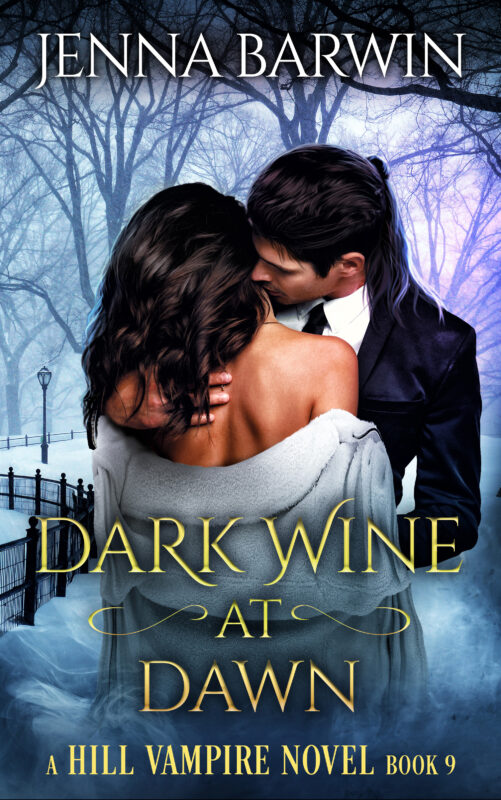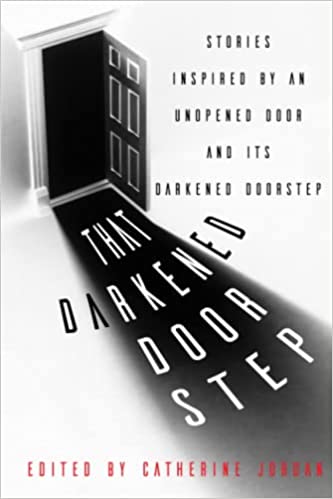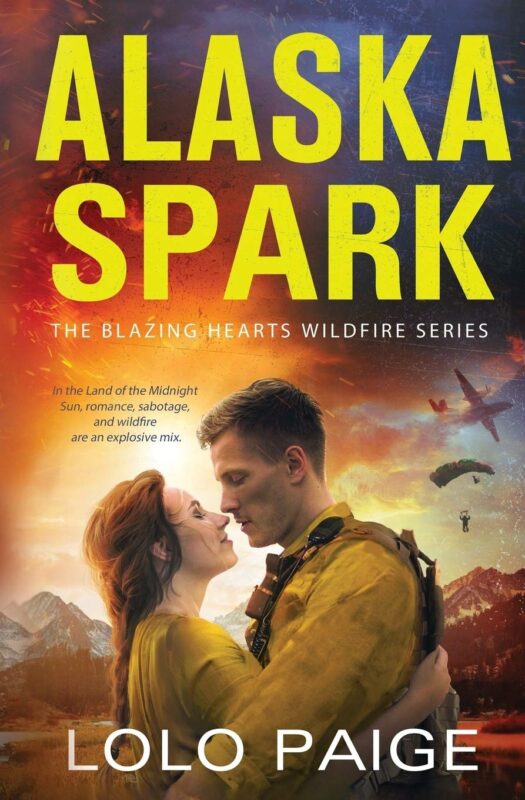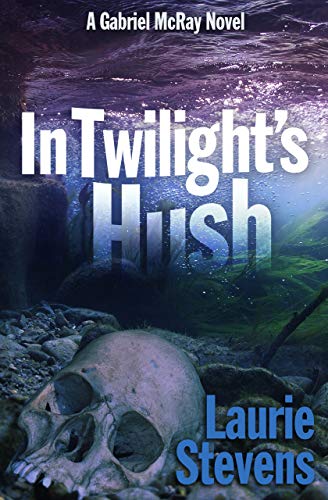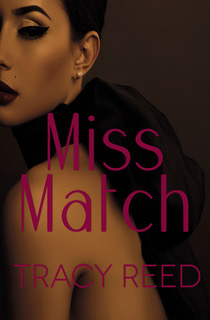e-maginings: Choosing an e-reader
August 16, 2010 by A Slice of Orange in category Archives tagged as e-books, e-maginings, e-readers, Kindle, Linda McLaughlin, Lyndi Lamont, nook, Sony readersAt the OCC meeting on Saturday, a friend asked me for advice on which e-readers to request from Santa. I jokingly said, “If Santa’s rich, ask for iPad. But if Santa isn’t, any of the e-ink readers should do nicely.”
Apple’s iPad, of course, is much more than a dedicated e-reader, and it’s quite a bit more costly. I’d sure love to have one, but I’ll wait. More companies are coming out with table computers and I’m figuring they’ll be cheaper than the iPad. (Sheesh, I had just published this post when I read an email about the Pandigital Novel, a “7-inch Color Multimedia eReader” which looks like an inexpensive iPad. It’s connected to B&N’s e-book store.) Apparently Bed, Bath and Beyond is carrying them, so I know where I’m going this week.)
At the moment, three companies dominate the dedicated e-book reader market: Amazon, Sony and Barnes & Noble. All make good devices, so how to decide which one is right for you? First, go look at them. I didn’t have that option when I bought my Kindle in December 2007. At the time, the only choice was the Kindle or the Sony reader and I chose the Kindle because I wanted the wireless delivery.
You can see and sample the nook at any Barnes & Noble bookstore. Last time I was in, I asked one of the sales clerks to show me and my husband how they work. He wanted to try out the internet browser function of the nook, but not being used to e-ink, he found it sluggish. That didn’t bother me, since I’ve been using a first-generation Kindle since 2007 and I know it takes a while for the little e-ink pixels to reorganize themselves into a new page. I have a couple of friends who have recently bought nooks and love it. If you want a reader that can also substitute as an internet browser, this is your best choice.
The Amzaon Kindle can be viewed at Target though the demos will be Kindle 2. The Kindle 3 has just been announced and Amazon is taking orders now for delivery in mid-September. The new Kindle offers a choice of wi-fi or wi-fi + 3G. If you buy a lot from Amazon anyway and don’t object to their proprietary format, this is a good choice. I have an Amazon Rewards card, so I can apply rewards certificates to e-books.
The Sony Readers can be seen at Target, Best Buy and Borders bookstores. If you can get into a Borders, you’ll get a better feel for the device as theirs seem to be fully functional, unlike the ones at Best Buy that flip between two advertising pages. I like the Sony Touch, with its touch screen and the ability to rotate the screen from portrait to landscape. I found it to have a more user-friendly interface than the nook, and this is currently my top contender for a new reading device. In addition to the company’s proprietary format BBeB, the Sony devices support PDF, ePub, MS Word and other text formats.
So how to choose one reader over the others? It depends somewhat on your reason for buying an e-reader and what you intend to do with it. One friend chose the Sony Touch over the Kindle because she wanted to be able to buy from the eHarlequin store instead of Amazon. She made a very wise choice for her.
Also think about whether or not you want a wi-fi or 3G (cell phone) connection. If not, you can probably save Santa a few bucks. But I warn you, once you’re tried a reader with the 3G connection, you’ll be hooked. I love that feature on my Kindle and I’ve updated my blogs and even bought books while riding in the car. But if you don’t mind transferring files the old-fashioned way, via USB cable, then look at the Sony models.
There are other e-book readers on the market: COOL-ER, the JetBook, and the Aluratek Libre eBook Reader, sold at Micro-Center. I don’t have any hand-on experience with these devices, so I won’t make any recommendations.
Which e-book reader do you recommend?
Linda McLaughlin
w/a Lyndi Lamont
Something Cool: 5 Tips to Keep Cool while writing Hot Romantic Scenes by Jina Bacarr
August 11, 2010 by A Slice of Orange in category Archives tagged as brook, Confessions of a Podcast Goddess, cool, hot, icebreakers, romance heroes, romantic scenes, writing
Unlike my heroine, Breezy Malone, in Spies, Lies & Naked Thighs, who’s been known to cool off on her job as a federal agent interrogating Russian spies with an ice cube placed in strategic places, I find the soothing sounds of water running in a brook keep me cool while I’m writing hot romantic scenes.
So as summer winds down and we’re all trying to figure out how to keep cool as the temperature goes up, way up, here are my 5 tips to keeping cool:
1. Keep the décor in your work area simple, selecting “cool†tones such as green, blue, or lavender. Avoid hot direct overhead lighting, use natural light whenever possible.
2. Cool fans. Not just the electric “blowing in your face†kind, but hand fans at your fingertips when you want to feel a cool breeze. Have some fun and paste photos of sexy hunks on the each side and fan away.
3. Create an illusion of coolness by diverting your senses. Hang wind chimes or Chinese lanterns where they will catch a breeze. Add beaded curtains in your doorway that move gently in the breeze. Then put on a sarong and write barefoot.
4. Tall, cool drinks. Make ice-cubes out of your favorite beverage (juice, cola, sports drinks), then toss the ice cubes into a tall glass of unflavored sparkling water. Add a sprig of mint. Spoon sorbet into ice-frosted glass bowls and enjoy!
5. Cool, running water soothes the senses and conjures up scenes of a man and a woman kissing passionately in the surf as foamy waves rush around them. Sounds delish…but if you don’t happen to have a running brook nearby, here is a short video of running water in a brook.
How hot the scenes are that you write while you’ll listening to the sounds of the running brook is up to you.
Best,
Jina
The Blonde Samurai: “She embraced the way of the warrior. Two swords. Two loves.â€
Jina Bacarr is also the author of The Blonde Geisha ,Cleopatra’s Perfume, Naughty Paris, Tokyo Rendezvous, a Spice Brief, and Spies, Lies & Naked Thighs
visit my website: http://www.jinabacarr.com/
A Filter For Your Writing Well by Kitty Bucholtz
August 9, 2010 by A Slice of Orange in category Archives tagged as It's Worth ItI had a bad week last month. I got a couple of my final school papers in the mail and I wasn’t pleased with my grades nor all the comments from my teachers. I thought I’d done a lot better than I had. (If you didn’t know, I’m getting my Master of Arts in Creative Writing degree at UTS in Sydney.) Like so many things in life, I didn’t fully understand what had so upset me until a few days after my mini-meltdown.
The shortest explanation is one a friend had to remind me of – the last year and a half has seen a lot of huge changes in my life. Regardless of the fact that I wanted most of those changes (moving around the world, going back to school), they still take a physical and emotional toll. Add in some short-term good things (company from America) and some short-term irritations (accountant needed more tax info from me that I had to find), and I found myself getting angry to one degree or another regularly, finally losing it when I received my school papers.
The reason I didn’t recognize what was happening is that it was all on the inside. I’d get mad about something, vent, and move on to the next thing. I’d get frustrated, take some deep breaths and push through. Then I’d get down about something (grades) and find myself unable to get up again. Because I was focused on trying to push through, to be strong and keep plugging along, I wasn’t paying attention to what was happening on the inside until I couldn’t get out of bed one day.
The day that happened I knew I had some serious thinking to do. It finally occurred to me that I was low-level angry at all kinds of things a lot of the time. In the stress of my first semester of grad school, I’d let my interior monitor get out of sync. By the end of the semester, I couldn’t even tell I was stressed about anything. But that morning in bed I realized I’d stopped making a conscious choice about how I wanted to react to the situations around me. I’d gotten into the habit of letting myself feel frustrated at every opportunity, at the world, at others, and at myself.
So for the last week, I’ve been practicing choosing not to be angry, frustrated, or depressed about things. It’s amazing how many opportunities there were for practice! ![]() But my interior monitor is getting re-synced. I’m getting better at reading myself again, and knowing when something needs to give, or change, or be left behind.
But my interior monitor is getting re-synced. I’m getting better at reading myself again, and knowing when something needs to give, or change, or be left behind.
I was at a friend’s house who has a reverse-osmosis filter at her kitchen sink. She reminded me to fill my water glass using the filtered water rather than the regular tap water. The parallel between the water and my bad week was instantaneous. She needed a filter so that the water coming through her old pipes would not bring up all the rust and other deposits into the glass.
We need the same kind of filter when we are writing. We need something that purifies the water coming up out of our inner well. For many of us, that filter is the joy of writing. But that filter needs to be cleaned regularly or it stops working as well. I’m trying to shine up my joy-of-writing filter every time I sit down to write now. I picture myself writing happily on my book, and I let that image seep into me until I can feel myself smiling over how much I’ll enjoy it. Then I start writing.
Like with any other rejection, I gave myself 24-48 hours to get over the sting of those first semester grades. Then I went back to work on my book, knowing that I understand my target market and believing that I’m doing a good job even if my academic acquaintances only half-agree.
If you haven’t done so lately, take a minute and check your interior monitor. Do you need to take a break? Do you need a cleaner writing filter? Or is your writing well clean and full of fresh ideas? I think I’m going to try to add this to my monthly or quarterly routines.
Kitty Bucholtz is the co-founder of Routines for Writers, a web site dedicated to helping writers write more. She writes romance novels, light urban fantasy novels for adults and young adults, and magazine articles. She is currently enrolled in the Master of Arts in Creative Writing program at University of Technology, Sydney.
Orlando! by Linda O. Johnston
August 6, 2010 by Linda O. Johnston in category Pets, Romance & Lots of Suspense by Linda O. Johnston, Writing Conferences tagged as Berkley Prime Crime, Harlequin Nocturne, Linda O. Johnston, National RWA Conference, OCCRWAA couple of months ago, my blog on A Slice of Orange discussed my angst about whether I really wanted to go to the Romance Writers of America Conference in Orlando. I wound up going. Am I glad? Yes!
I didn’t stay for the entire conference, which I regret now. But I accomplished most of what I wanted to–saw nearly all the people I hoped to see, attended most of the sessions I’d planned to, and learned about new resources and other information about publishing and promoting.
I met a number of people I’d never anticipated seeing, too. Networked and schmoozed and partied and had a great time.
I admit that the Orlando weather didn’t wow me. I have lived in L.A. long enough to be really spoiled about the minimal humidity on most hot days. Just walking between the two hotels at the Disney Swan and Dolphin Resort wilted me.
But the steaming up of my sunglasses didn’t deter me. The brief walk was worth it, plus the view was really nice, including the waterway between the two facilities.
By the way, as I mentioned in my blog last month, if you’re interested in hearing some of the things I learned at National, I’ll be sharing them at the OCC meeting on August 14. Come and ask questions–and I’ll answer whatever I can.
Linda O. Johnston
http://www.lindaojohnston.com/
http://www.killerhobbies.blogspot.com/
Isabel Swift’s Hyperbolic Coral Reef
July 29, 2010 by Isabel Swift in category From Isabel Swift tagged as Hyperbolic Coral Reef, ProjectsYou may, perhaps, be wondering just what the Hyperbolic Coral Reef is?
So glad you asked!
It’s a project started in Australia by two crocheting sisters seeking to call attention to the destruction of the Great Barrier Reef.
Interestingly, there’s a mathematical angle to all this. I will likely not get this entirely right, but basically for some time mathematicians denied there was a hyperbolic function until Mr Vincenzo Riccati and Johann Heinrich Lambert came up with it in 1760. This despite the fact that many coral grow hyperbolically, so there were examples right under their nose (or toes).
And you can crochet a hyperbolic function by simply creating a chain and doubling it for every stitch–example below:
It was a powerful visual and experience to remind me you can start with something very simple–a single chain stitch. Then do something very simple–double it. And if you continue to add these simple building blocks, you can create something of amazing complexity–perhaps even beauty. Just think about the single cell dividing and dividing and what remarkable organism it can come up with!
The Smithsonian Community Reef is a satellite of the worldwide Hyperbolic Crochet Coral Reef Project created by Margaret and Christine Wertheim of the Institute For Figuring in Los Angeles. It was made possible through the support of the Quiksilver Foundation, the Embassy of Australia, and the Coral Reef Alliance. Find out more about Margaret and Christine Wertheim and the Institute For Figuring in Los Angeles here, and their Hyperbolic Crochet Coral Reef Project here. Find out more about the upcoming exhibition of the Hyperbolic Crochet Coral Reef and Smithsonian Community Reef at the National Museum of Natural History on the Museum’s Smithsonian Community Reef Temporary Exhibitions Page. To be included on this e-mail circulation list (or removed from it) please contact sicommunityreef@yahoo.com.
Affiliate Links
A Slice of Orange is an affiliate with some of the booksellers listed on this website, including Barnes & Nobel, Books A Million, iBooks, Kobo, and Smashwords. This means A Slice of Orange may earn a small advertising fee from sales made through the links used on this website. There are reminders of these affiliate links on the pages for individual books.
Search A Slice of Orange
Find a Column
Archives
Featured Books
THE DARKEN DOORSTEP
When faced with a darkened doorstep, think before you walk through.
More info →IN TWILIGHT’S HUSH (A GABRIEL MCRAY NOVEL BOOK 4)
Detective Gabriel McRay investigates a cold case from 1988 involving a missing teenager named Nancy Lewicki.
More info →MISS MATCH
What happens when the matchmaker inadvertently gets matched while matching someone else?
More info →Newsletter
Contributing Authors
Search A Slice of Orange
Find a Column
Archives
Authors in the Bookstore
- A. E. Decker
- A. J. Scudiere
- A.J. Sidransky
- Abby Collette
- Alanna Lucus
- Albert Marrin
- Alice Duncan
- Alina K. Field
- Alison Green Myers
- Andi Lawrencovna
- Andrew C Raiford
- Angela Pryce
- Aviva Vaughn
- Barbara Ankrum
- Bethlehem Writers Group, LLC
- Carol L. Wright
- Celeste Barclay
- Christina Alexandra
- Christopher D. Ochs
- Claire Davon
- Claire Naden
- Courtnee Turner Hoyle
- Courtney Annicchiarico
- D. Lieber
- Daniel V. Meier Jr.
- Debra Dixon
- Debra H. Goldstein
- Debra Holland
- Dee Ann Palmer
- Denise M. Colby
- Diane Benefiel
- Diane Sismour
- Dianna Sinovic
- DT Krippene
- E.B. Dawson
- Emilie Dallaire
- Emily Brightwell
- Emily PW Murphy
- Fae Rowen
- Faith L. Justice
- Frances Amati
- Geralyn Corcillo
- Glynnis Campbell
- Greg Jolley
- H. O. Charles
- Jaclyn Roché
- Jacqueline Diamond
- Janet Lynn and Will Zeilinger
- Jeff Baird
- Jenna Barwin
- Jenne Kern
- Jennifer D. Bokal
- Jennifer Lyon
- Jerome W. McFadden
- Jill Piscitello
- Jina Bacarr
- Jo A. Hiestand
- Jodi Bogert
- Jolina Petersheim
- Jonathan Maberry
- Joy Allyson
- Judy Duarte
- Justin Murphy
- Justine Davis
- Kat Martin
- Kidd Wadsworth
- Kitty Bucholtz
- Kristy Tate
- Larry Deibert
- Larry Hamilton
- Laura Drake
- Laurie Stevens
- Leslie Knowles
- Li-Ying Lundquist
- Linda Carroll-Bradd
- Linda Lappin
- Linda McLaughlin
- Linda O. Johnston
- Lisa Preston
- Lolo Paige
- Loran Holt
- Lyssa Kay Adams
- Madeline Ash
- Margarita Engle
- Marguerite Quantaine
- Marianne H. Donley
- Mary Castillo
- Maureen Klovers
- Megan Haskell
- Melanie Waterbury
- Melisa Rivero
- Melissa Chambers
- Melodie Winawer
- Meriam Wilhelm
- Mikel J. Wilson
- Mindy Neff
- Monica McCabe
- Nancy Brashear
- Neetu Malik
- Nikki Prince
- Once Upon Anthologies
- Paula Gail Benson
- Penny Reid
- Peter Barbour
- Priscilla Oliveras
- R. H. Kohno
- Rachel Hailey
- Ralph Hieb
- Ramcy Diek
- Ransom Stephens
- Rebecca Forster
- Renae Wrich
- Roxy Matthews
- Ryder Hunte Clancy
- Sally Paradysz
- Sheila Colón-Bagley
- Simone de Muñoz
- Sophie Barnes
- Susan Squires
- T. D. Fox
- Tara C. Allred
- Tara Lain
- Tari Lynn Jewett
- Terri Osburn
- Tracy Reed
- Vera Jane Cook
- Vicki Crum
- Writing Something Romantic
Affiliate Links
A Slice of Orange is an affiliate with some of the booksellers listed on this website, including Barnes & Nobel, Books A Million, iBooks, Kobo, and Smashwords. This means A Slice of Orange may earn a small advertising fee from sales made through the links used on this website. There are reminders of these affiliate links on the pages for individual books.





